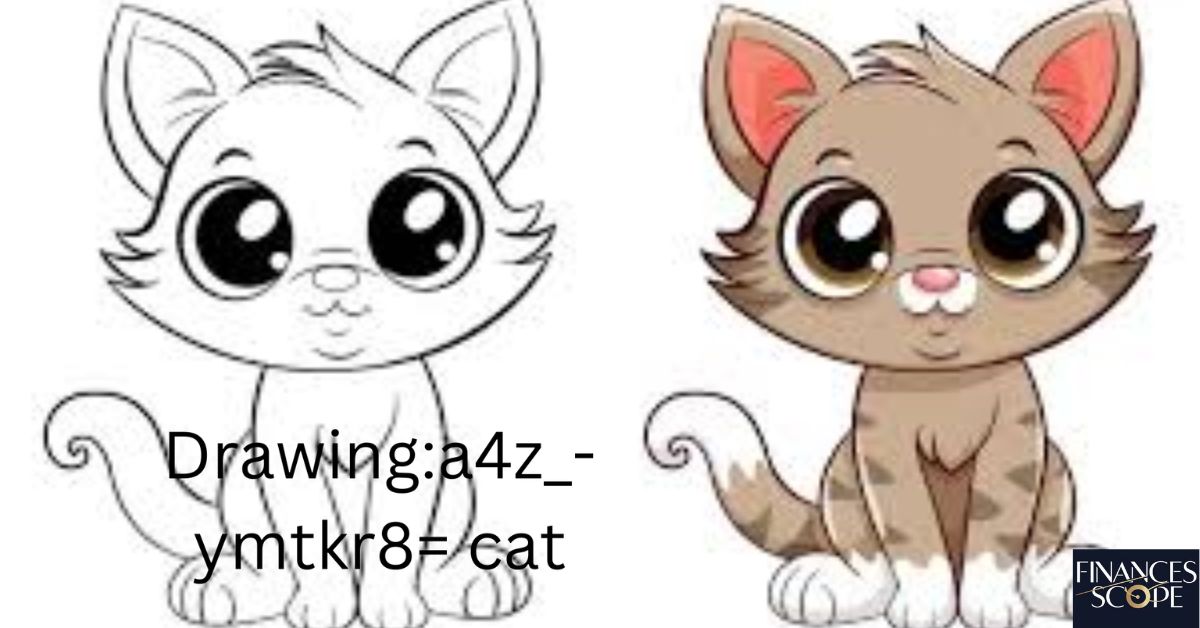Drawing a cat involves sketching its basic shapes like a circle for the head and oval for the body. Add details like eyes, ears, and whiskers to complete the look. It’s a simple and fun way to express your creativity.
Unleash your creativity by drawing a cat with simple steps! From cute whiskers to a fluffy tail, you can bring your artistic vision to life. Perfect for beginners and cat lovers alike!
Drawing a cat is fun and easy with some simple steps. Start with a basic shape for the body, then add details like the ears, eyes, and whiskers. Finish with a fluffy tail to bring your cat drawing to life.
Materials Needed
Selecting the right tools and materials is the first step towards creating beautiful cat drawings. This section will guide you through the essential supplies and optional items that can enhance your artistic process.
Basic Supplies
To begin your cat drawing journey, gather these fundamental tools:
- Pencils: A range of graphite pencils (2H to 6B) for varying line weights and shading
- Erasers: Both kneaded and vinyl erasers for precision corrections
- Paper: Smooth drawing paper or sketchbook suitable for detailed work
- Sharpener: To maintain sharp pencil points for fine details
These basic supplies form the foundation of your cat drawing kit, allowing you to start creating immediately.
Optional Tools For Enhancing Your Drawings
As you progress, consider adding these items to expand your artistic possibilities:
- Blending stumps: For creating smooth gradations in fur textures
- Colored pencils: To add vibrancy and explore color in your cat portraits
- Fine-tip pens: For adding intricate details and whiskers
- Pastels: Soft or oil pastels for adding rich textures and colors
These additional tools can help you explore different techniques and styles in your cat drawings, allowing for more expressive and diverse artwork.
Understanding Cat Anatomy
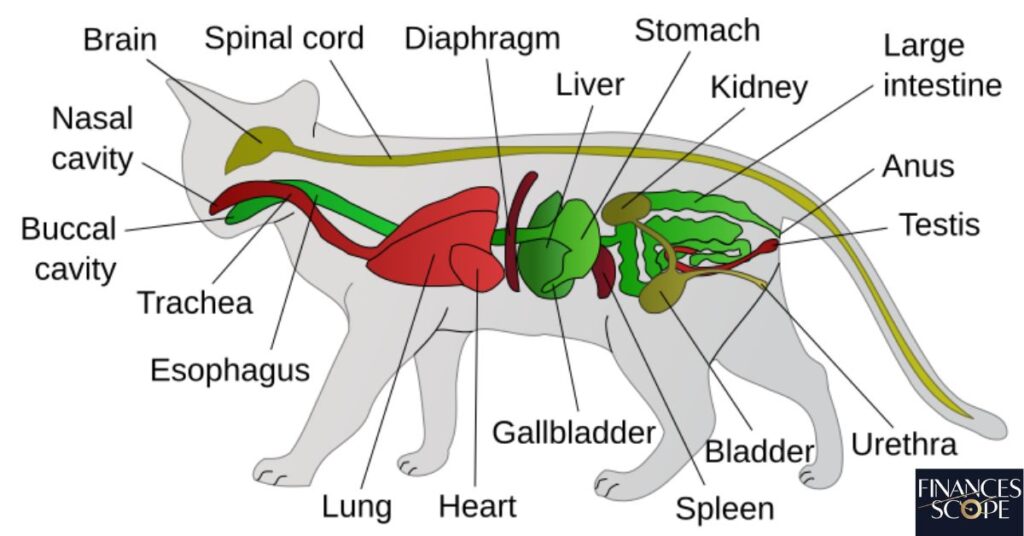
A solid grasp of feline anatomy is essential for creating realistic cat drawings. This knowledge will help you capture the essence of a cat’s form and movement, bringing authenticity to your artwork.
Basic Structure Of A Cat
Focus on understanding these key elements:
- Skeletal structure: Emphasize the flexible spine and lightweight bone structure
- Muscle groups: Identify major muscle areas, particularly in the legs and shoulders
- Proportions: Learn the typical ratios of body parts, such as head-to-body length
Familiarizing yourself with these elements will provide a strong foundation for your drawings, ensuring that your cats look anatomically correct and natural.
Studying Cat Movements And Poses
Observe and practice drawing cats in various positions:
- Common postures: Sitting, stretching, sleeping, grooming
- Action poses: Jumping, pouncing, running, climbing
- Facial expressions: Various ear and whisker positions indicating mood
Regular observation of real cats will greatly enhance your ability to capture their essence in your drawings. Pay attention to the subtle shifts in weight and balance that characterize feline movement.
Read This Blog: Banana:b4hnuk08dew= Monkey: A Sweet Bond Between Fruit and Animal
Drawing a Cat’s Head
The cat’s head is often the focal point of a drawing, requiring careful attention to detail and proportion. Mastering this aspect will bring life and character to your feline subjects.
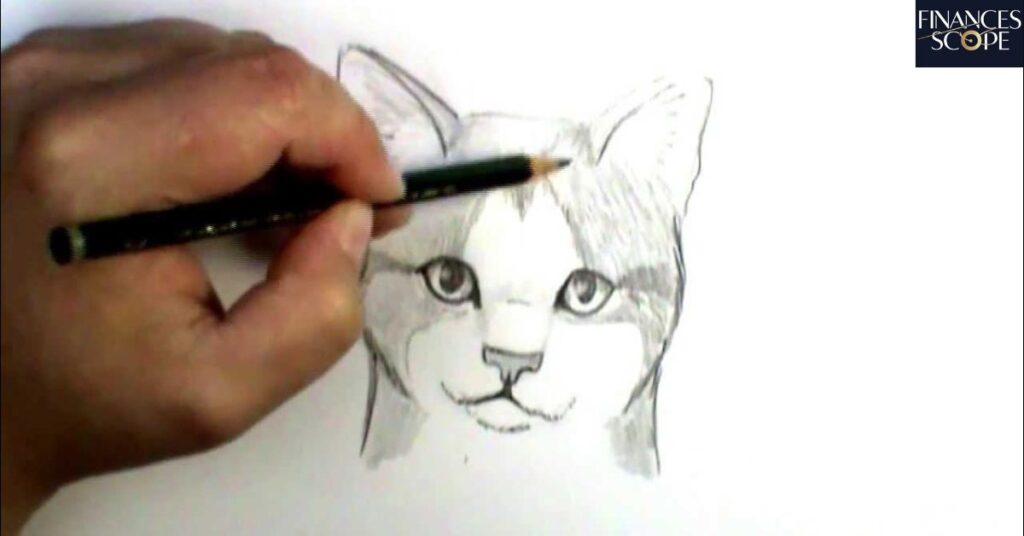
Outlining The Head Shape
Begin with these basic shapes:
- A circular shape for the main part of the head
- Smaller circles for cheeks and muzzle
- Triangular shapes for ears, paying attention to their placement and angle
These basic shapes will guide the overall structure of the cat’s head, ensuring proper proportions and placement of features.
Adding Facial Features
Focus on placing these key elements:
- Eye placement: Typically halfway down the head, spaced apart
- Nose position: Centered below the eyes, with a distinctive triangular shape
- Mouth shape: A gentle curve below the nose, with subtle lines for definition
Proper placement of these features is crucial for a realistic cat face. Take time to observe how these elements relate to each other in real cats.
Detailing the Eyes, Nose, And Mouth
Pay attention to these fine details:
- Eye shape: Almond-shaped with varying pupil sizes depending on light and mood
- Nose texture: Soft triangular shape with nostrils and a unique leather-like texture
- Mouth details: Subtle lines for lips and whisker pads, adding character to the face
These fine details bring life and expression to your cat’s face. Practice drawing these features individually before incorporating them into a full portrait.
Drawing A Cat’s Body
Capturing the elegant form of a cat’s body requires understanding its proportions and unique features. This section will guide you through creating a believable feline form.
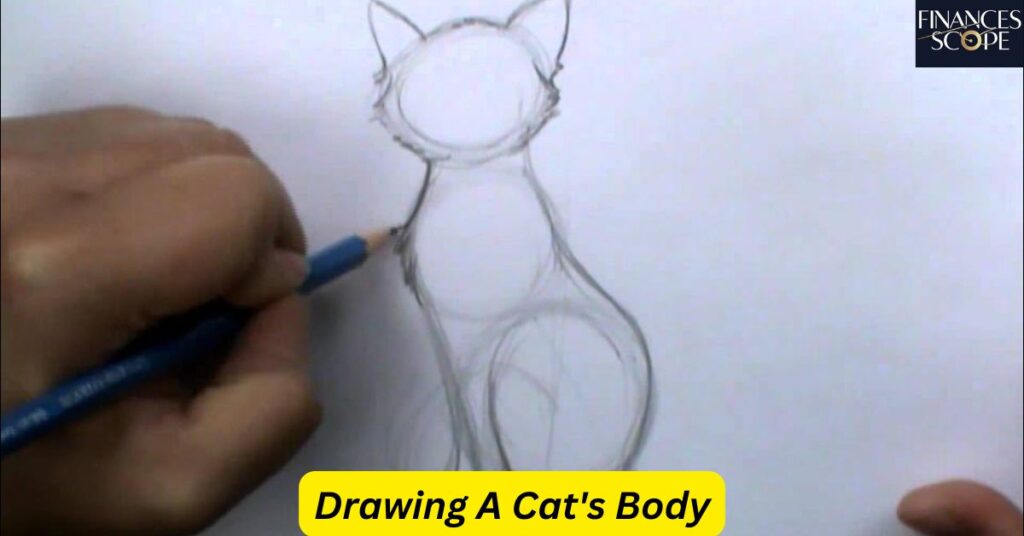
Basic Body Proportions
Remember these key ratios:
- The body is typically 3-4 head lengths long
- The height at the shoulders is about 1-1.5 head lengths
- The tail is usually as long as the body, though this can vary by breed
These proportions can vary slightly between breeds but serve as a good starting point for most domestic cats.
Drawing the Legs and Paws
Focus on these characteristics:
- Front legs: Relatively straight and slender, with subtle musculature
- Hind legs: More muscular with a distinctive bend, powerful for jumping
- Paws: Small and round with visible pads and retractable claws
Pay attention to the way legs connect to the body for natural-looking poses. The positioning of legs can greatly affect the overall stance and mood of your cat drawing.
Adding The Tail
Consider these aspects when drawing the tail:
- Tail length: Usually equal to body length, but can vary by breed
- Flexibility: Show various curves and positions to convey mood and balance
- Fur texture: Varies from short and sleek to long and fluffy, depending on the breed
The tail is an expressive part of the cat, crucial for balance and communication. Its position can add dynamism to your drawing.
Fur And Texture Techniques
Mastering fur texture is key to creating realistic and appealing cat drawings. This section will explore techniques to bring your feline subjects to life through convincing fur renderings.
Creating Realistic Fur
Practice these techniques:
- Short, directional strokes for short-haired cats, following the natural growth pattern
- Longer, flowing lines for long-haired breeds, emphasizing volume and movement
- Varying pressure to create depth and volume, with lighter strokes for underlayers
Experiment with different pencil techniques to achieve various fur textures, from sleek and smooth to fluffy and voluminous.
Adding Texture And Depth
Enhance your drawings with these methods:
- Layering: Build up fur in multiple layers, starting light and gradually adding darker tones
- Highlights and shadows: Create contrast for a 3D effect, paying attention to light source
- Blending: Use stumps or fingers for smooth transitions between light and dark areas
These techniques will bring your cat drawings to life with rich texture and depth, making them appear more tactile and realistic.
Capturing Different Cat Breeds
Each cat breed has unique characteristics that can be highlighted in your drawings. This section will guide you through capturing the essence of various popular breeds.

Drawing a Domestic Short Hair
Focus on these features:
- Medium build with well-proportioned features
- Short, sleek coat with minimal texture
- Variety of colors and patterns, from solid to tabby to calico
Domestic short hairs are great for practicing basic cat anatomy and proportions, offering a versatile subject for your drawings.
Drawing A Persian Cat
Emphasize these distinctive traits:
- Round face with a flat nose and chubby cheeks
- Small ears set wide apart on a large head
- Long, fluffy coat with a full ruff around the neck
Persian cats require special attention to fur texture and facial structure, challenging you to capture their luxurious coats and unique expressions.
Drawing A Siamese Cat
Highlight these characteristics:
- Slender, elongated body with a long, elegant neck
- Triangular face with large, almond-shaped eyes
- Short, fine coat with distinctive color points on face, ears, paws, and tail
Siamese cats offer a chance to practice drawing sleek, elegant feline forms with striking facial features and coloration.
Incorporating Personality And Expression
Bringing character to your cat drawings involves more than just accurate anatomy. This section will help you infuse life and personality into your feline subjects.
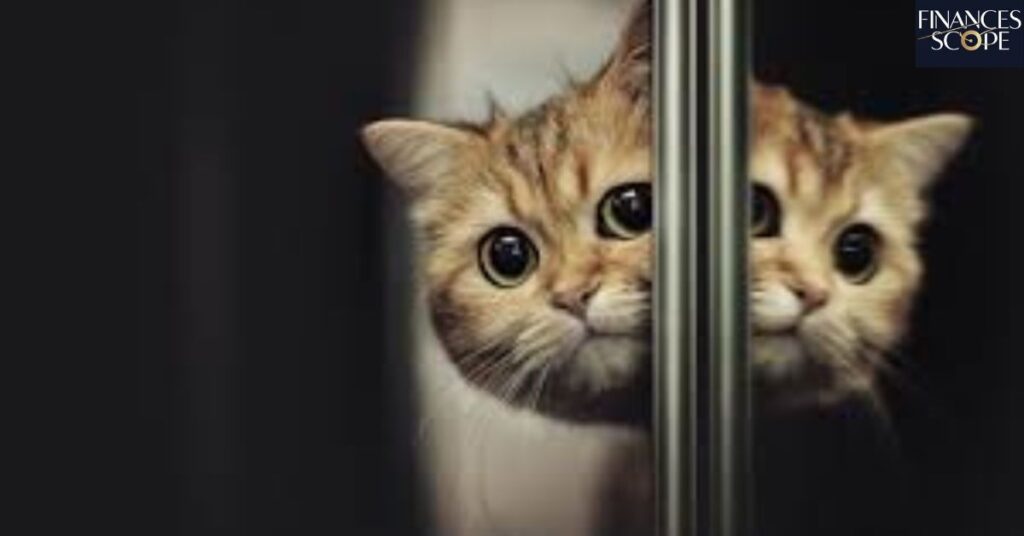
Expressive Eyes
Focus on these aspects:
- Pupil size and shape to convey mood and lighting conditions
- Eye direction to show focus or interest in something off-canvas
- Eyelid position for various expressions, from alert to relaxed
The eyes are crucial in capturing a cat’s personality and emotion, often considered the window to their soul.
Body Language And Gestures
Pay attention to these elements:
- Ear positions: Forward for interest, back for fear or aggression, sideways for uncertainty
- Tail movements: Upright for confidence, curved for friendliness, puffed for fear or aggression
- Overall posture: Relaxed, alert, defensive, or playful stances
Understanding feline body language will add depth to your cat portraits, allowing you to convey a range of moods and intentions.
Using References Effectively
Reference images are valuable tools for improving your cat drawing skills. This section will guide you on how to find and use references to enhance your artwork.
Finding Good Reference Images
Look for these qualities:
- High-quality photographs with clear details and good lighting
- Various angles of the same cat to understand its three-dimensional form
- Different breeds, poses, and lighting conditions to expand your repertoire
A diverse collection of references will enhance your understanding of cat anatomy and behavior, providing a solid foundation for your drawings.
How To Use References Without Copying?
Practice these techniques:
- Analyzing the reference rather than copying exactly, understanding underlying structures
- Combining elements from multiple references to create unique compositions
- Using references to understand structure and form, then drawing from memory or imagination
References should inspire and inform your drawings, not limit your creativity. Use them as a learning tool to develop your own style and interpretation.
Common Mistakes And How To Avoid Them
Awareness of common pitfalls can significantly improve your cat drawings. This section highlights frequent errors and provides strategies to overcome them.
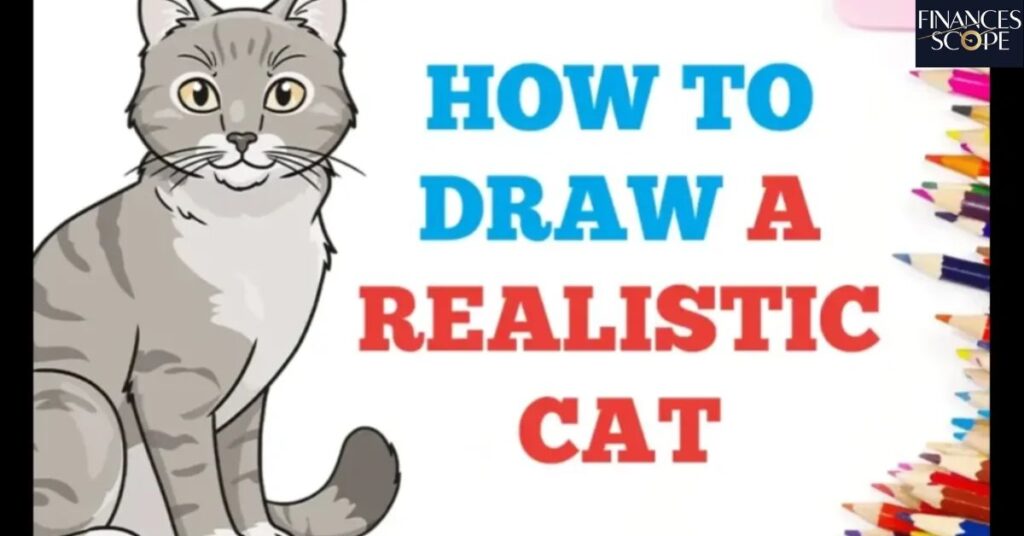
Proportional Errors
Watch out for these issues:
- Oversized or undersized head relative to the body
- Incorrect leg length or positioning, affecting the overall stance
- Unrealistic body elongation or compression, distorting the cat’s form
Regular practice and careful observation will help you avoid these mistakes. Use basic shapes and guidelines to maintain proper proportions.
Overworking the Drawing
Be cautious of these tendencies:
- Adding too much detail in fur or shading, losing the overall form
- Losing the initial energy of the sketch through excessive refinement
- Erasing and redrawing excessively, leading to a tired-looking drawing
Know when to stop and preserve the freshness of your drawing. Sometimes, less is more in capturing the essence of a cat.
Tips For Beginners
Starting your cat drawing journey can be both exciting and challenging. This section offers advice to help beginners build confidence and skills.
Starting Simple
Begin with these approaches:
- Basic shapes to construct the cat’s form, focusing on overall structure
- Single line drawings to capture poses quickly and improve gesture drawing
- Head studies to master facial features before tackling full-body drawings
Building a strong foundation will set you up for more complex drawings later. Don’t be afraid to make mistakes; they’re part of the learning process.
Practicing Regularly
Commit to these habits:
- Daily sketching, even for just 10-15 minutes, to build muscle memory
- Experimenting with different techniques and styles to find what works for you
- Keeping a sketchbook dedicated to cat drawings, tracking your progress over time
Consistent practice is key to improving your skills. Remember, every drawing teaches you something, regardless of the final result.
Advanced Techniques
As you progress, explore more sophisticated methods to enhance your cat drawings. This section introduces advanced concepts to elevate your artwork.
Shading and Lighting
Master these elements:
- Value scales to create depth and form, understanding how light interacts with fur
- Different light sources and their effects on the cat’s appearance
- Cast shadows for grounding your cat in the scene and adding realism
Effective shading and lighting can dramatically improve the realism and impact of your drawings, bringing your cats to life on the page.
Creating Dynamic Poses
Challenge yourself with these concepts:
- Action poses like jumping or stretching, capturing the energy of feline movement
- Foreshortening to create depth and perspective in more complex compositions
- Multiple cats interacting in a single scene, exploring relationships and storytelling
Dynamic poses bring energy and life to your cat drawings, pushing your skills and creativity to new levels.
Digital Drawing Tips
Exploring digital media can open up new possibilities for your cat drawings. This section introduces digital tools and techniques for feline artistry.
Tools And Software Recommendations
Consider these options:
- Drawing tablets for precise control and pressure sensitivity
- Software like Procreate, Adobe Photoshop, or Krita, each offering unique features
- Digital brushes that mimic traditional media or create unique fur textures
Digital tools offer flexibility and unique features for cat drawing, allowing for experimentation and easy corrections.
Read This Blog: Mastering Roblox: A Guide To Virtual Creativity
Digital Techniques For Drawing Cats
Experiment with these digital-specific methods:
- Layering for easy editing and refinement of different elements
- Custom brushes for fur and texture effects, streamlining your workflow
- Color adjustments to explore different cat breeds and lighting scenarios
Digital techniques can enhance your workflow and expand your artistic possibilities, offering new ways to bring your feline subjects to life.
Frequently Asked Questions
How long does it take to become proficient at drawing cats?
With regular practice, noticeable improvement can be seen in a few months, but mastery is an ongoing journey that can take years of dedicated effort.
What’s the best way to practice drawing cat fur?
Start with simple directional lines, gradually building layers and varying pressure to create texture and depth. Observe real cat fur for reference.
Can I draw cats without using reference images?
While possible, using references, especially when starting, helps understand anatomy and proportions better. As you gain experience, you’ll rely less on direct references.
How do I choose the right paper for cat drawings?
Smooth, medium-weight paper is ideal for detailed pencil work, while textured paper can enhance fur effects. Experiment to find what suits your style best.
Is digital drawing easier than traditional methods for cat portraits?
Digital drawing offers more flexibility and easier corrections, but both methods have their unique advantages and challenges. The best method depends on your personal preference and goals.
Conclusion
Drawing cats is a rewarding artistic pursuit that combines technical skill with creative expression. From understanding feline anatomy to mastering advanced techniques, each step in your journey brings you closer to creating captivating cat portraits.
Remember, the key to improvement lies in regular practice, keen observation, and a willingness to experiment. As you continue to draw cats, you’ll develop your own unique style and find joy in bringing these fascinating creatures to life on paper or screen. Whether you’re sketching your own pet or imagining fantastical feline creatures.

Marcus Delgado is a certified financial planner with expertise in retirement strategies and tax optimization.
With a background in economics and a passion for helping individuals achieve financial freedom, Marcus provides practical advice on long-term wealth building and smart money management.
